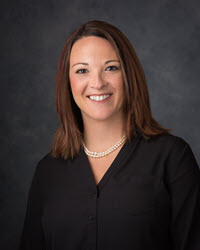Create and use clinical note templates for consistent, accurate notes and train your team to electronically sign those notes to lock them down.
Having accurate clinical notes is very important in your dental office because clinical notes are the record of the patient’s treatment. It’s so important that each clinician document accurate clinical notes and electronically sign them. Clinical notes can make or break your doctor in the case of a lawsuit or complaint. When it comes to clinical notes, I live by the motto, “If you didn’t write it down, it didn’t happen!”
Since these notes are so important, what can you, as an office manager do to ensure these notes are accurate in order to protect your practice? Start by creating clinical note templates in the Dentrix Patient Chart.
Creating Clinical Note Templates
Clinical note templates are completely customizable, and you can choose to include procedures your doctor preforms, drugs he or she prescribes, and materials used in your practice. You can also choose to include important additional notes in your templates.

For example, I live in Florida, and with the opioid crisis being such an epidemic, as of July 1, 2019 the state requires doctors who prescribe an opioid to counsel those patients on the risks. Doctors should also provide them with an informational pamphlet informing them of opioid alternative pain medications. This is something I’ve included in the clinical note template when prescribing an opioid, to ensure that it is noted that the required procedures were done.
Electronically Signing Clinical Notes
Another important factor concerning clinical notes, is the need for the doctor and hygienists to electronically sign their notes. Usually hygienists can do this once they’ve completed their note.

For doctors who have their assistants write their notes, I recommend the doctor review the notes at the end of the day. After checking the note is accurate, the doctor can sign the note. Signing the note locks it down so it can no longer be edited. This helps to protect your practice and ensures notes aren’t being altered. If something needs to be added to the note, you can add an addendum to it.
Detailed, accurate clinical notes can help to protect your practice, and by using clinical note templates in the Patient Chart, you can be sure this is done properly. As the office manager, assign an assistant to create the doctor’s templates, and assign a hygienist to create the ones they will use. Once set up, the templates are accessible from all computers in the office.
Not only can using clinical note templates correctly help to protect your practice by keeping a detailed and accurate record, but they can also save clinical staff time when writing their notes.
Learn More
For additional information, read the following :
- Stay On Top Of Your Clinical Notes
- Making Changes to Clinical Notes
- Customizing Clinical Note Templates and Categories to Fit Your Practice Needs

By Charlotte Skaggs
Certified Dentrix Trainer and The Dentrix Office Manager columnist
Charlotte Skaggs is the founder of Vector Dental Consulting LLC, a practice management firm focused on taking offices to the next level. Charlotte co-owned and managed a successful dental practice with her husband for 17 years. She has a unique approach to consulting based on the perspective of a practice owner. Charlotte has been using Dentrix for over 20 years and is a certified Dentrix trainer. Contact Charlotte at [email protected].





